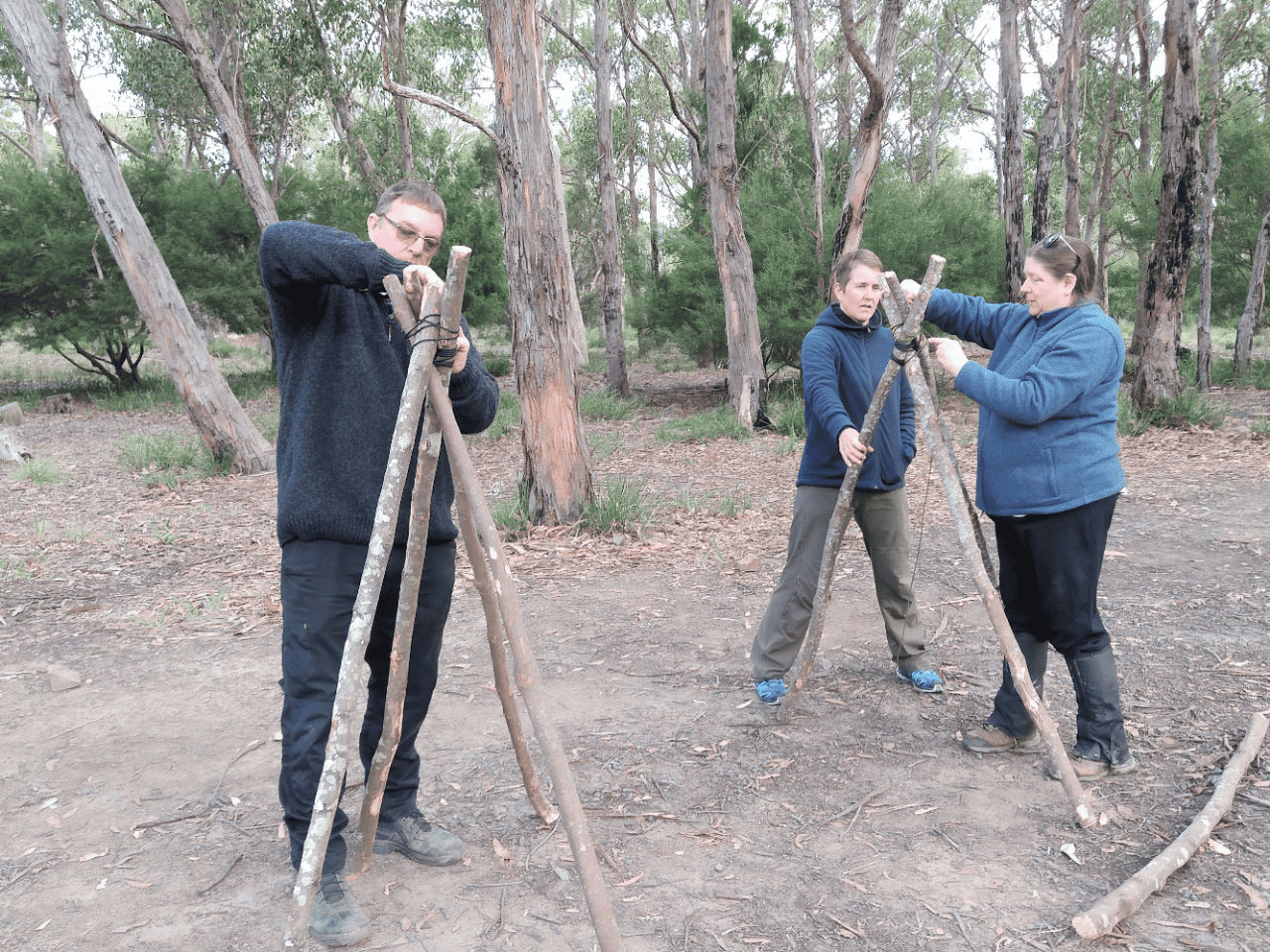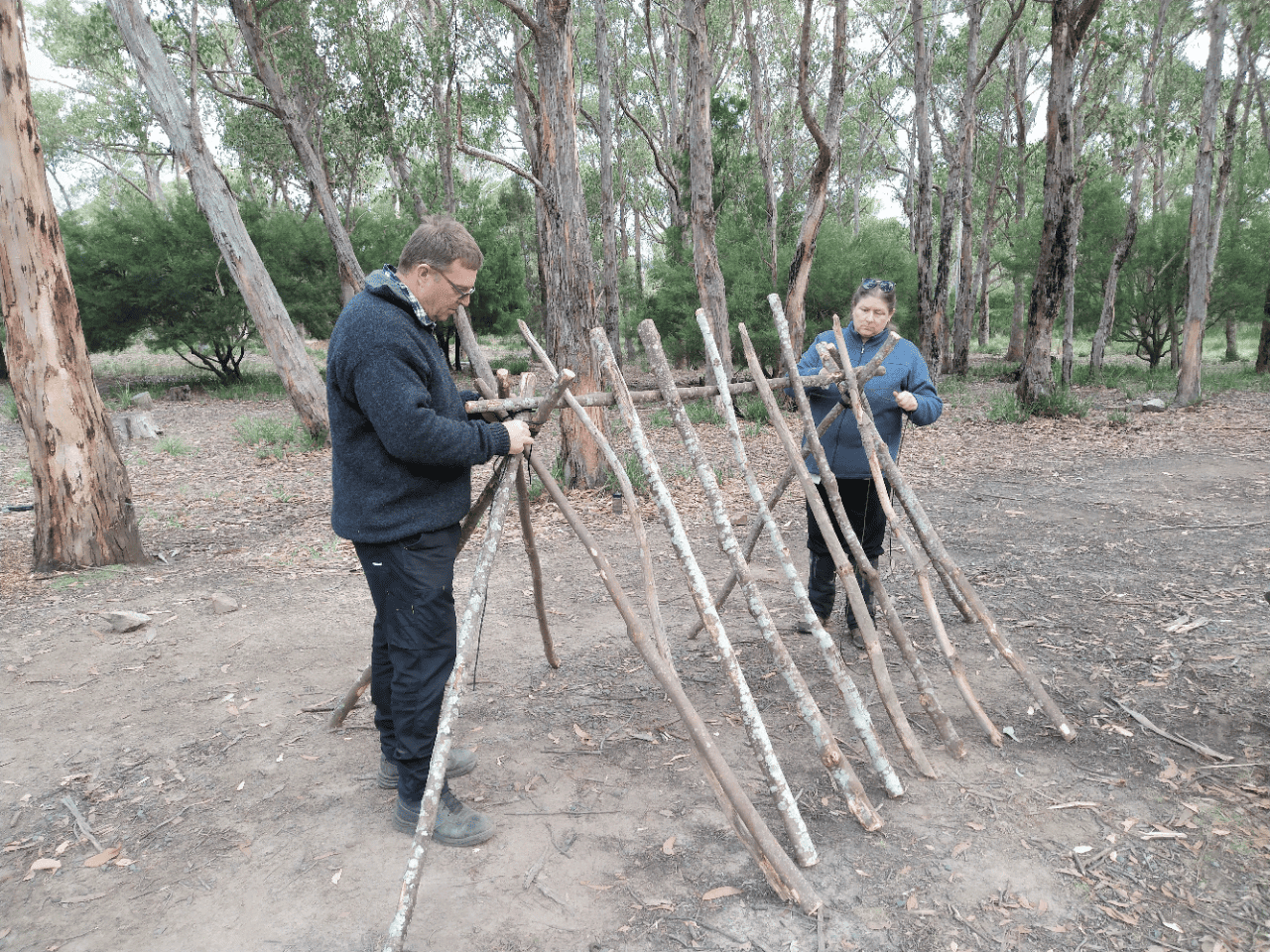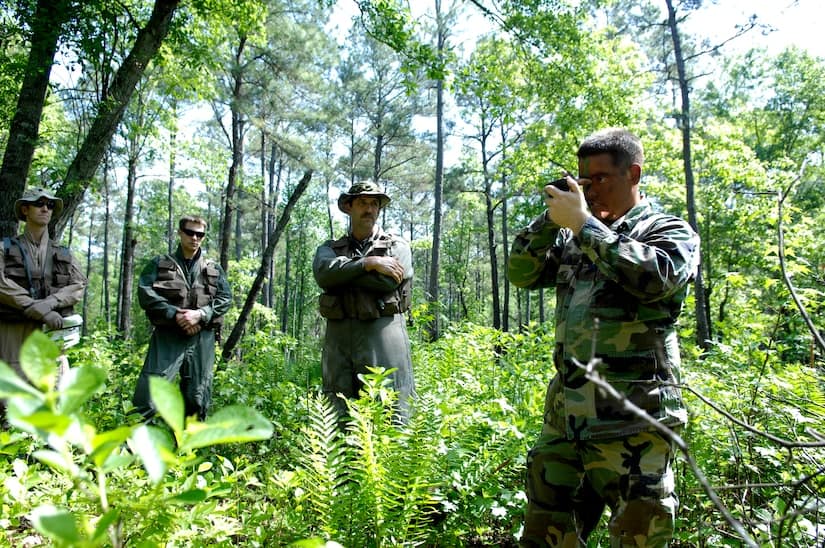Within survival courses Australia, you may well know the difference between the two terms (bushcraft and survival) that we outlined in our Bushcraft vs Survival page.
When comparing the two different names and the derivation of their usage, you may also know that the phrase ‘survival training’ comes from the overarching parent word bushcraft…with survival training having been created by the military.
Learning survival techniques is predominantly focused on your equipment and was originally conceived to instruct military personnel in a range of diverse skills, to provide them with the right training to survive in remote areas.
This usually refers to being able to survive on your own for up to 72 hours and getting back to safety quickly – to then either be rescued or to ‘self-rescue’ (also known as self recovery).
We’ll get into what SERE actually stands for further below.
Survival Courses Australia
 At SCT, we train students of all ages in modern survival and bushcraft techniques and we are NOT a ‘Sigma 6 Alpha-style’ military training school. We are accessible to everyone that has the right mind frame and wishes to learn new, exciting, and life-saving wilderness skills.
At SCT, we train students of all ages in modern survival and bushcraft techniques and we are NOT a ‘Sigma 6 Alpha-style’ military training school. We are accessible to everyone that has the right mind frame and wishes to learn new, exciting, and life-saving wilderness skills.
SCT’s survival courses Australia are fully inclusive, open to anyone who wants to come, and we prefer to teach our students hands-on skills and applicable knowledge that can be applied in a real-world scenario.
This makes it a much more relevant, fun, and interesting way to learn and hone these life skills – and it’s based on actual experience from being in the field practising these skills and hiking solo for a number of decades.
Our aim is to enable our students to retain this all-important knowledge and practical skill sets, and allow them to travel and navigate through a variety of diverse terrains and environments safely.
We strive to deliver realistic, interesting, and exciting survival courses in Australia, but…equally importantly, relevant and real-world survival training that can be implemented in a wide range of scenarios.
SCT
Survival Courses Tasmania is different from other survival courses in Australia, as our students have the opportunity to learn survival skills relevant to any environment and type of terrain.
 Fundamentally, we also instruct using a proven mix of classroom and outdoor learning – providing our students with the best possible method of retaining the key knowledge and applying it in real-life, practical scenarios at the same time.
Fundamentally, we also instruct using a proven mix of classroom and outdoor learning – providing our students with the best possible method of retaining the key knowledge and applying it in real-life, practical scenarios at the same time.
Our bushcraft and survival courses are also suited to a variety of outdoor activities such as hiking, trekking, mountain biking, fishing, kayaking, 4WD trips, skiing, working remotely, and so on, as they provide critical survival and navigational techniques that would benefit anyone spending time in a diverse wilderness environment.
So, come and check out our range of survival and bushcraft courses – we have something for everyone interested in the outdoors.
SCT Offers Staged Survival & Bushcraft Courses, As Well As Our New SERE Training Course (Early 2024!)
What Does SERE Stand For?
 Survival, Evasion, Resistance, and Escape is defined as a training program, best known by its military acronym (SERE), with the term originating in the US…however, is now more widely used in Australia and the UK etc as well.
Survival, Evasion, Resistance, and Escape is defined as a training program, best known by its military acronym (SERE), with the term originating in the US…however, is now more widely used in Australia and the UK etc as well.
Back in my day, it was known as ‘E&E’ in the UK – Escape and Evasion – but it encompasses the same type of survival training pretty much.
SERE training prepares military personnel, Defense civilians, and private military contractors to survive and return from survival situations.
The curriculum includes survival skills, evading capture, application of the military code of conduct, and techniques for escape from enemy captivity.
Officially established by the US Air Force at the end of World War II and the start of the Cold War, it was extended to other branches including the Navy and US Marine Corps, and then consolidated within the US Air Force during the Korean War with more of an emphasis on ‘resistance training.’
During the Vietnam War, which ended in 1975, there was a definite need for ‘jungle’ survival training and a greater focus on American POWs. As a result, the US military enlarged their SERE programs and training sites.
In the late 1980s, the US Army became more involved with SERE as Special Forces units grew. Today, SERE is taught to a variety of military personnel based on their risk of capture and exploitation value.
More specifically, they train air crew, special operations, as well as foreign diplomatic and intelligence personnel.
The origins of SERE are also rooted in the leadership of Britain’s MI9 Escape and Evasion (E&E) organisation, formed at the beginning of World War II (1939–1945).
Led by World War I veteran Colonel (later Brigadier) Norman Crockatt, MI9 was formed to train air crew and Special Forces in evading enemy troops following ejection from an aircraft, forced landings, or being cut off behind enemy lines.
A training school was established in London, and officers and instructors from MI9 also began visiting operational air bases, where they provided onsite training to air crews unable to be detached from their duties to attend formal courses.
MI9 went on to create a multitude of evasion and escape tools. These tools included overt items to aid immediate evasion after bailing out (or ejecting) and covert items for use to aid escape following capture.
These survival items were hidden within their uniforms and personal items (e.g. concealed compasses, silk and tissue maps, etc).
Once the US entered the war in 1941, MI9 staff travelled to Washington, DC, to discuss their now mature E&E training, devices, and proven results with the US Army Air Forces (USAAF).
As a result, the United States initiated their own Escape and Evasion organisation, known as MIS-X, based in Virginia.
For a look at some of the SERE training, take a look at this article here.
